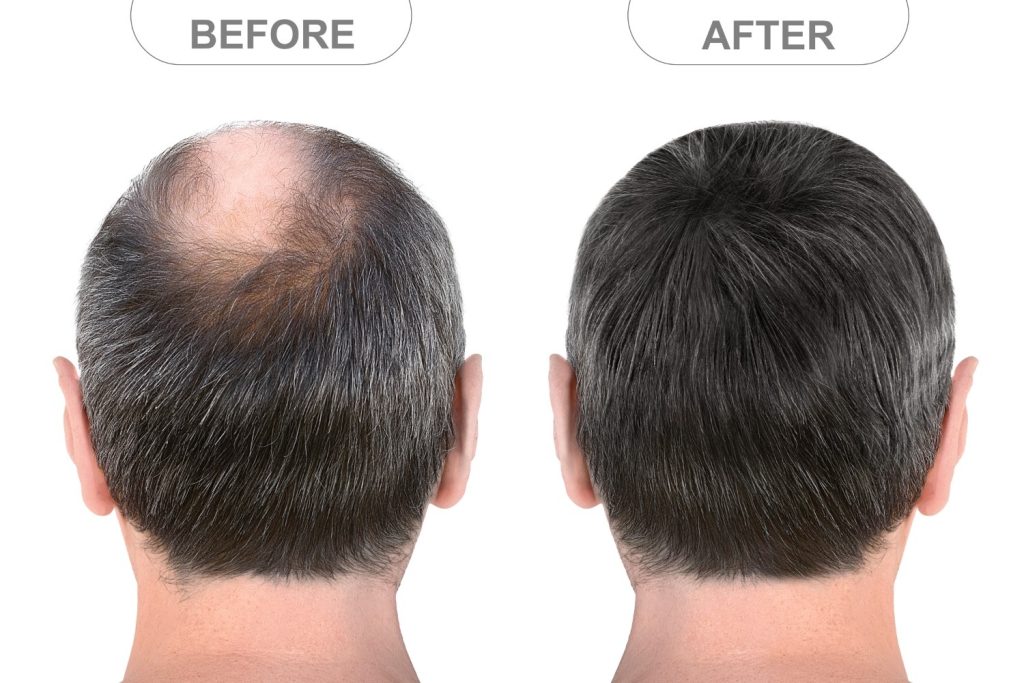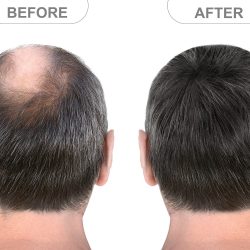
Hair loss and thinning can be a distressing experience for many people. It can affect our self-esteem and confidence, and it can be challenging to find effective solutions. Fortunately, there are a number of treatments available that can help to restore hair growth and volume.
Understanding Hair Loss
Before exploring the treatment options, it’s important to understand the underlying cause of your hair loss. There are many factors that can contribute to hair loss, including genetics, hormones, age, stress, medical conditions, and certain medications. Identifying the cause is essential for determining the most appropriate treatment.
Treatment Options for Hair Loss and Thinning
1. Topical Treatments:
- Minoxidil (Rogaine): This over-the-counter medication is FDA-approved for both men and women. It works by stimulating hair follicles and prolonging the growth phase. Studies have shown that minoxidil can be effective in slowing hair loss and promoting some regrowth. It typically comes in a liquid or foam form and is applied directly to the scalp twice a day. Results may take up to 6 months to be noticeable, and consistent use is required to maintain any regrowth. Prices typically range from $15 to $30 per month.
- Finasteride (Propecia): This prescription medication is only approved for men. It works by blocking the conversion of testosterone to dihydrotestosterone (DHT), a hormone that can contribute to hair loss. Finasteride has been shown to be effective in slowing hair loss and promoting some regrowth in men with male pattern baldness. It is taken orally once a day. Results may take up to 3 months to be noticeable, and consistent use is required to maintain any regrowth. Prices typically range from $40 to $60 per month.
2. Laser Therapy:
Laser therapy involves using low-level lasers to stimulate hair follicles and promote hair growth. There is some evidence that laser therapy can be effective in slowing hair loss and promoting some regrowth, but more research is needed. Laser therapy treatments are typically performed in a doctor’s office or at a hair loss clinic. The cost of treatment can vary depending on the provider and the number of sessions required. Prices typically range from $100 to $300 per session.
3. Platelet-Rich Plasma (PRP) Therapy:
PRP therapy involves injecting a concentrated sample of your own platelets into the scalp. Platelets contain growth factors that can promote hair growth. There is some evidence that PRP therapy can be effective in slowing hair loss and promoting some regrowth, but more research is needed. PRP therapy is typically performed in a doctor’s office or at a hair loss clinic. The cost of treatment can vary depending on the provider and the number of sessions required. Prices typically range from $500 to $2,000 per session.

4. Hair Transplant:
Hair transplantation is a surgical procedure that involves moving hair follicles from one area of the scalp to another. This is a permanent solution for hair loss, but it is also the most expensive and invasive option. Hair transplants are typically performed by a dermatologist or plastic surgeon. The cost of treatment can vary depending on the size and complexity of the transplant. Prices typically range from $5,000 to $20,000.
5. Scalp Micropigmentation:
Scalp micropigmentation is a cosmetic procedure that involves creating the appearance of tiny hair follicles on the scalp using tatuagem. This can be a good option for people who are not candidates for hair transplantation or who do not want to undergo surgery. Scalp micropigmentation is typically performed by a trained technician. The cost of treatment can vary depending on the size and complexity of the procedure. Prices typically range from $2,000 to $5,000.
6. Natural and Lifestyle Changes:
In addition to the treatments listed above, there are also a number of natural and lifestyle changes that you can make to promote hair growth and volume. These include:
- Eating a healthy diet rich in nutrients that are essential for hair health, such as protein, iron, biotin, and vitamins A, C, and D.
- Managing stress.
- Getting enough sleep.
- Avoiding smoking.
- Using gentle hair care products and avoiding harsh chemicals and heat styling.
- Scalp massage
Choosing the Right Treatment for You
The best treatment for hair loss and thinning will vary depending on the underlying cause, your individual needs, and your budget. It is important to consult with a physician to determine the best treatment for your hair.


